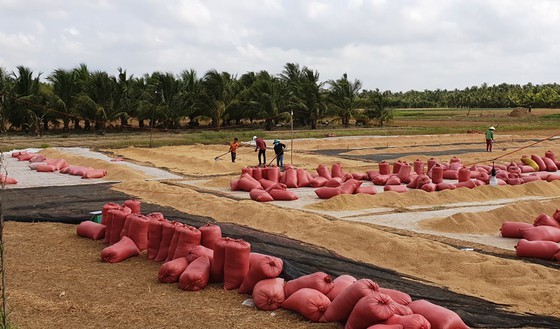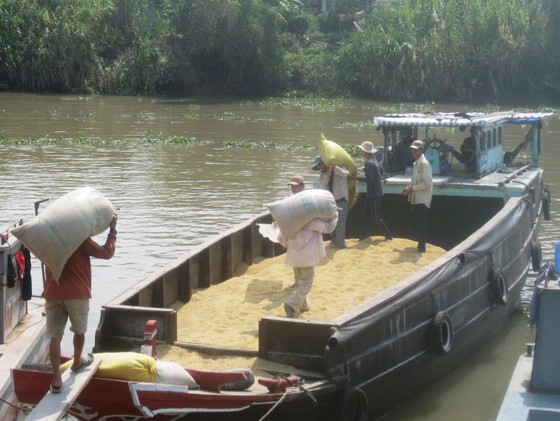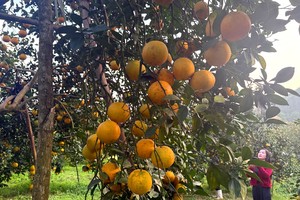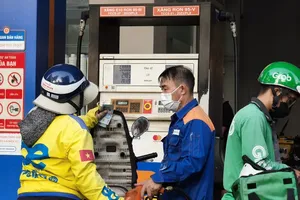
Traders buy paddy from VND5,800 to VND6,000 per kilogram in the field. Particularly, the Taiwanese fragrant rice variety fetches from VND6,000 to VND6,200 per kilogram, and the Jasmine rice variety at about VND6,100-VND6,300 per kilogram.
On September 27, Ms. Lam Thi Chin, a farmer in Dong Binh Commune in Thoi Lai District in Can Tho City, said that thanks to high prices of paddy in the summer-autumn rice crop, farmers have been very active in the production of the autumn-winter rice crop. Over the past few months, the weather has been favorable, with fewer harmful pests and diseases, so the investment cost has decreased significantly, while the yield of early autumn-winter rice is fairly high from 5.5-6 tons per hectare. Moreover, the price of IR 50404 fresh paddy variety is bought at VND5,800-VND6,000 per kilogram by traders in the field. Taiwanese fragrant rice variety fetches from VND6,000 to VND6,200 per kilogram, and Jasmine rice variety at about VND6,100-VND6,300 per kilogram. With such prices, after deducting investment cost, farmers earn a profit of VND22-25 million per hectare, a fairly good margin for the autumn-winter rice crop.
According to the Department of Crop Production under the Ministry of Agriculture and Rural Development, the floods in the Mekong Delta come late and fluctuate at a low level this year. Therefore, the departments and provinces have increased the production of the autumn-winter crop to about 800,000 hectares, an increase of 75,800 hectares compared to the same period last year. The output is estimated at 4.4 million tons, up 492,000 tons over the same period.
On September 27, Ms. Lam Thi Chin, a farmer in Dong Binh Commune in Thoi Lai District in Can Tho City, said that thanks to high prices of paddy in the summer-autumn rice crop, farmers have been very active in the production of the autumn-winter rice crop. Over the past few months, the weather has been favorable, with fewer harmful pests and diseases, so the investment cost has decreased significantly, while the yield of early autumn-winter rice is fairly high from 5.5-6 tons per hectare. Moreover, the price of IR 50404 fresh paddy variety is bought at VND5,800-VND6,000 per kilogram by traders in the field. Taiwanese fragrant rice variety fetches from VND6,000 to VND6,200 per kilogram, and Jasmine rice variety at about VND6,100-VND6,300 per kilogram. With such prices, after deducting investment cost, farmers earn a profit of VND22-25 million per hectare, a fairly good margin for the autumn-winter rice crop.
According to the Department of Crop Production under the Ministry of Agriculture and Rural Development, the floods in the Mekong Delta come late and fluctuate at a low level this year. Therefore, the departments and provinces have increased the production of the autumn-winter crop to about 800,000 hectares, an increase of 75,800 hectares compared to the same period last year. The output is estimated at 4.4 million tons, up 492,000 tons over the same period.
 Traders in Mekong Delta provinces buy paddy for export. (Photo: SGGP)
Traders in Mekong Delta provinces buy paddy for export. (Photo: SGGP)
Up to now, the plan of sowing the autumn-winter crop has finished. And in the early-sowed areas, farmers have been harvesting paddy with good yield and high selling prices.
The autumn-winter rice crop often has fewer pests and diseases, lower investment cost, and higher yield than the summer-autumn rice crop. Therefore, in the long term, in places where the sowing of rice is late due to the influence of water resources, 200,000-400,000 hectares or more of the summer-autumn rice will be moved to the autumn-winter rice crop to create favorable conditions in directing rice production and preventing pests and diseases. The agricultural sector will sharply reduce the scale of the summer-autumn rice crop to increase the production scale of the autumn-winter rice crop.
The autumn-winter rice crop often has fewer pests and diseases, lower investment cost, and higher yield than the summer-autumn rice crop. Therefore, in the long term, in places where the sowing of rice is late due to the influence of water resources, 200,000-400,000 hectares or more of the summer-autumn rice will be moved to the autumn-winter rice crop to create favorable conditions in directing rice production and preventing pests and diseases. The agricultural sector will sharply reduce the scale of the summer-autumn rice crop to increase the production scale of the autumn-winter rice crop.
























